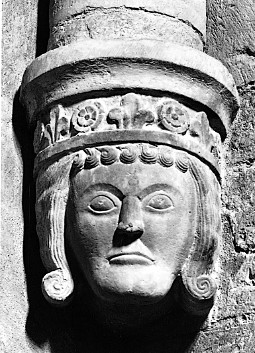
Birger Jarl, also known as Birger Magnusson, was a Swedish statesman and regent, jarl, and a member of the House of Bjälbo, who played a pivotal role in the consolidation of Sweden. His first marriage was to Princess Ingeborg of Sweden, which created his base of power. Birger led the Second Swedish Crusade, which established Swedish rule in Finland. Additionally, he is traditionally attributed with the foundation of the Swedish capital, Stockholm, around 1250. Birger used the Latin title of dux sveorum et guttorum.

Magnus Eriksson was King of Sweden from 1319 to 1364, King of Norway as Magnus VII from 1319 to 1355, and ruler of Scania from 1332 to 1360. By adversaries he has been called Magnus Smek.
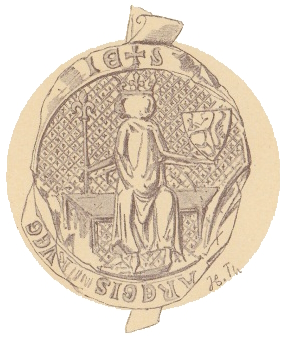
Haakon VI, also known as Håkan Magnusson, was King of Norway from 1343 until his death and King of Sweden between 1362 and 1364. He is sometimes known as Haakon Magnusson the Younger to distinguish him from his great-grandfather, Haakon V.
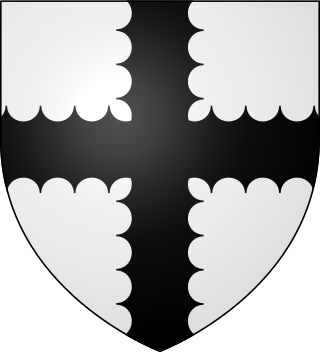
Henry I Sinclair, Earl of Orkney, Lord of Roslin was a Scottish nobleman. Sinclair held the title Earl of Orkney and was Lord High Admiral of Scotland under the King of Scotland. He was sometimes identified by another spelling of his surname, St. Clair. He was the grandfather of William Sinclair, 1st Earl of Caithness, the builder of Rosslyn Chapel. He is best known today because of a modern legend that he took part in explorations of Greenland and North America almost 100 years before Christopher Columbus. William Thomson, in his book The New History of Orkney, wrote: "It has been Earl Henry's singular fate to enjoy an ever-expanding posthumous reputation which has very little to do with anything he achieved in his lifetime."

Earl of Orkney, historically Jarl of Orkney, is a title of nobility encompassing the archipelagoes of Orkney and Shetland, which comprise the Northern Isles of Scotland. Originally founded by Norse invaders, the status of the rulers of the Northern Isles as Norwegian vassals was formalised in 1195. Although the Old Norse term jarl is etymologically related to "earl", and the jarls were succeeded by earls in the late 15th century, a Norwegian jarl is not the same thing. In the Norse context the distinction between jarls and kings did not become significant until the late 11th century and the early jarls would therefore have had considerable independence of action until that time. The position of Jarl of Orkney was eventually the most senior rank in medieval Norway except for the king himself.

Earl of Caithness is a title that has been created several times in the Peerage of Scotland, and it has a very complex history. Its first grant, in the modern sense as to have been counted in strict lists of peerages, is now generally held to have taken place in favor of Maol Íosa V, Earl of Strathearn, in 1334, although in the true circumstances of 14th century, this presumably was just a recognition of his hereditary right to the ancient earldom/mormaership of Caithness. The next year, however, all of his titles were declared forfeit for treason.
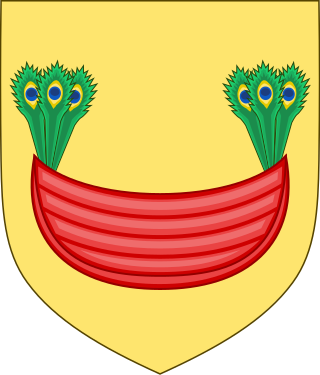
The House of Bonde is along with the houses of Bielke and Natt och Dag, one of the oldest surviving Swedish noble families. The earliest attested nobleman who is known to have carried the name Bonde was Torer Bonde, who served as witness during the confirmation of a donation to the abbey at Vreta in either 1282 or 1286.

Euphemia of Sweden was a Swedish princess. She was Duchess consort of Mecklenburg, heiress of Sweden and of Norway, and mother of King Albert of Sweden. (c. 1338-1412) .
Malise V, Earl of Strathearn and Caithness, Jarl of Orkney was the last of the native Gaelic earls of Strathearn.
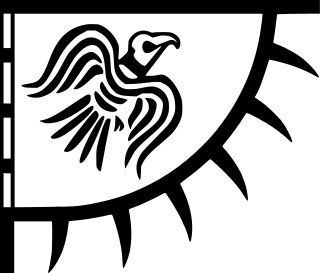
The Mormaer of Caithness was a vassal title mostly held by members of the Norwegian nobility based in Orkney from the Viking Age until 1350. The mormaerdom was held as fief of Scotland and the title was frequently held by the Norse Earls of Orkney, who were thus a vassal of both the King of Norway and the King of Scots. There is no other example in the history of either Norway or of Scotland in which a dynasty of earls owed their allegiance to two different kings.
Bengt Algotsson was a medieval Swedish lord. He was the Duke of Finland and Halland, as well as the Viceroy of Scania in 1350s.
Karl Ulfsson was a 14th-century Swedish magnate and High Constable of Sweden.
The Fief of Viborg (1320–1534) was for two centuries a late medieval fief in the southeastern border of Finland and the entire Swedish realm. It was held by its chatelain, a fief-appointed feudal lord.
Jon Haraldsson was a Norwegian noble who served as the Jarl of Orkney between 1206 and 1231. Jon Haraldsson and his brother David were the sons of Harald Maddadsson with his second wife Hvarflod, daughter of Earl Máel Coluim of Moray. Jon and David were joint Earls of Orkney after the death of their father in 1206. David Haraldsson died of sickness in 1214, leaving Jon Haraldsson to rule alone. William the Lion, king of Scotland, took Jon's daughter hostage in August 1214 as part of a peace agreement with the new sole Earl.
Magnus II was the first in the Angus line of Scottish earls of Orkney. His title was "Earl of Orkney and Caithness."
Gilbert, son of Magnus (1210–1256) was jarl of Orkney. Although this was a Norwegian title, some writers use the Scottish term earl, as when the land became Scottish, in the 15th century, the position was replaced by an earl.
Ulvhild Håkansdotter was twice Queen of Sweden and once Queen of Denmark through her successive marriages to Inge II of Sweden, Niels of Denmark, and Sverker I of Sweden. Ulvhild had an important role in the Nordic dynastic connections of her time, but the sources are insufficient on detailed circumstances. She is mentioned as a femme fatale of medieval Scandinavia, as well as a benefactor of the Catholic Church.

Sophia of Denmark was Queen of Sweden as the consort of King Valdemar.
Máel Ísu, Maol Íosa or Máel Íosa, meaning devotee of Jesus, Latinised as Malise, may refer to:
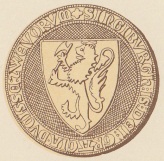
Ingeborg, Duchess of Öland was a Norwegian princess and a Swedish duchess. She was Duchess of Uppland, Öland and Finland. As a widow, she had a seat in the regency government of her nephew Magnus, who reigned as king of both Sweden and Norway.










